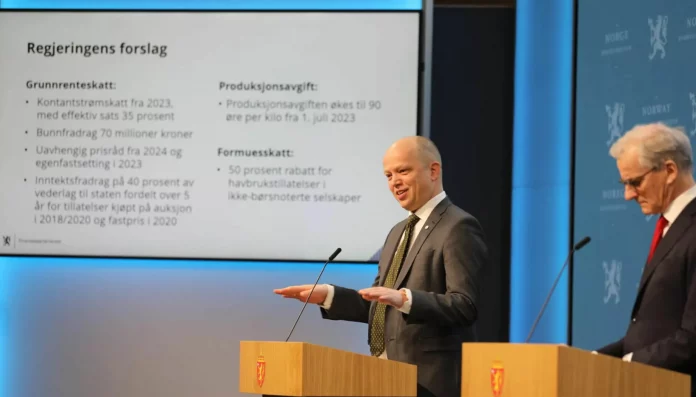At least half of the gross proceeds from the basic rent tax will be allocated to the municipal sector.
The Norwegian government projects a windfall of approximately NOK 5 billion ($460 million) from the ground rent tax imposed on the aquaculture industry, as reported in the country’s national budget on Friday.
The new 25 percent tax on salmon production was introduced by the Norwegian parliament in May, backdated to the start of 2023.
This controversial tax, which was first mooted in September last year, has been widely criticised and blamed by suppliers for a damaging slow-down in investment across the country.
Initially estimated at NOK 3.5 billion ($320 million), the raised projection aligns with the effective basic rent tax rate now standing at 25 per cent.
Revenue from this tax, influenced by various factors including salmon prices, exchange rates, and biological conditions, automatically adjusts to the profit margins within the industry. The government’s revised estimate is based on operating results from 2022 and the ongoing financial landscape in 2023, including salmon prices and exchange rates.
Despite the high salmon prices in the first half of 2023 amplifying the tax proceeds, increased operating costs and ongoing tax optimization assessments by companies add a layer of uncertainty to the final revenue figures.
At least half of the gross proceeds from the basic rent tax will be allocated to the municipal sector. Host municipalities and counties benefit from the increased production tax, and an enhanced share from the sale of new permit capacity.
The government’s enhanced revenue estimate underscores the significant financial impact of the ground rent tax on both the aquaculture industry and public sector funding.

